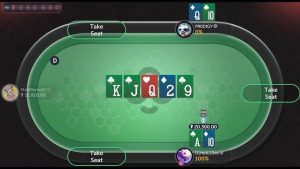
In the game of poker, bluffing is a crucial strategy that can make or break a player’s success at the table. While some may see bluffing as deceitful or dishonest, it is actually a skill that requires careful calculation and strategy. Knowing when and how to bluff can be the difference between winning big or losing it all.
Understanding the Basics of Bluffing
Bluffing in poker is essentially a form of deception. It involves representing a stronger hand than what you actually have in order to force your opponents to fold their hands. Bluffing can be an effective strategy when used at the right time and in the right way. However, it is important to keep in mind that bluffing should not be done randomly or haphazardly, as it can quickly backfire and leave you in a vulnerable position.
When to Bluff
Bluffing should be done strategically and selectively. One key factor to consider when deciding whether or not to bluff is your position at the table. Bluffing from a late position, when most of your opponents have already acted, can be more effective than bluffing from an early position, where you have no information on how other players will act. Additionally, bluffing is more likely to be successful against a small number of opponents rather than a large group.
Another important consideration is your opponent’s playing style. Bluffing against tight players who are more likely to fold can be a more effective strategy than bluffing against loose players who are more likely to call. It is also important to pay attention to the overall dynamics of the table and adjust your bluffing strategy accordingly.
How to Bluff
When bluffing in poker, it is important to make your actions consistent with the hand you are representing. This means that you should maintain the same betting patterns and behaviors that you would if you actually had a strong hand. Additionally, it can be helpful to choose the right moment to bluff, such as when a scare card is dealt that could potentially improve your hand or when your opponents seem unsure of their own holdings.
It is also important to consider the size of your bets when bluffing. A small or medium-sized bet can be more convincing than an overly large bet, as it is more likely to represent a standard value bet rather than a bluff. However, it is also important to vary your bet sizes and incorporate bluffs into your overall playing strategy in order to keep your opponents guessing.
Conclusion
Bluffing in poker is a complex and nuanced strategy that requires skill, discretion, and careful calculation. Knowing when and how to bluff can be a valuable tool in a player’s arsenal, allowing them to outmaneuver their opponents and secure a win at the table. By understanding the basics of bluffing, considering when to bluff, and implementing effective bluffing techniques, players can improve their overall success and take their game to the next level.

